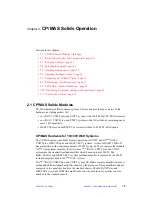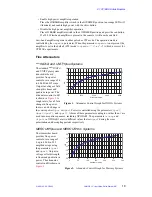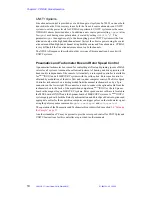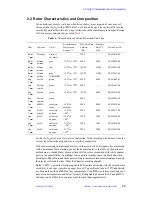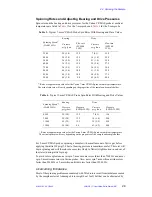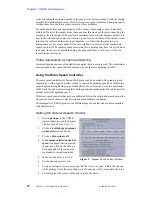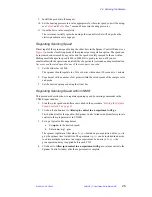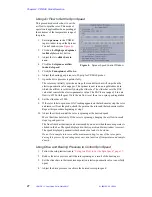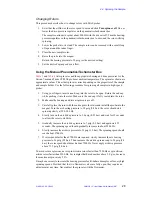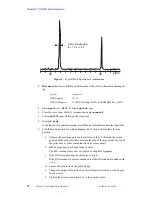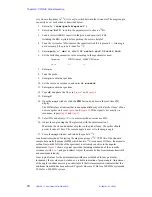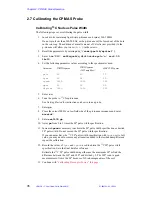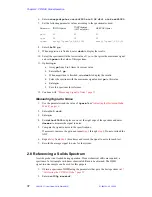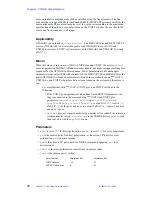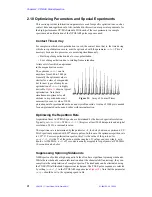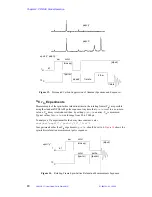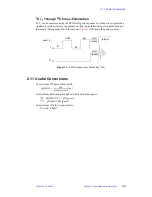
Chapter 2. CP/MAS Solids Operation
29
VNMR 6.1C User Guide: Solid-State NMR
01-999162-00 C0402
Changing Rotors
CAUTION:
To prevent damage to the rotor or bearing, always smoothly shut off
the rotation gas using the rotation pressure regulator before turning
off the bearing gas using the bearing pressure regulator.
1.
Decrease the rotor speed smoothly by reducing the drive air pressure.
2.
Maintain the bearing air at least 28 psig (1.9 bar).
3.
When the rotation air is completely off and the rotor speed has slowed to a few
hundred revolution per second, slowly decrease the bearing air pressure to zero.
4.
Lower the probe into its stand. The sample rotor can be removed with a small loop
of tape around the index finger.
5.
Place the new sample rotor.
6.
Raise the probe into the magnet.
Rotor Synchronization
If the spectrometer is equipped with a rotor synchronization option
(Part No. 00-990385-00), the spinning speed can be read by the acquisition system.
Entering
hsrotor='y' su
shows the current spinning speed in the acquisition status
window. The parameter
srate
is updated after each experiment to show the spinning
speed. Furthermore, if
in='y'
, an acquisition is halted if the spinning speed differs by
more than 100 Hz from spinning speed at the start of the acquisition.
For further details on rotor synchronization, refer to the manual System Operation.
2.5 Adjusting Homogeneity
For the balance of this manual, MERCURYcpmas will refer to MERCURY-Vx and
MERCURYplus systems equipped with the CP/MAS option and INOVAcpmas to
UNITY
INOVA and UNITYplus systems with a CP/MAS option. UNITY systems are
described in the previous versions of this manual
Homogeneity should be adjusted as follows on a sample of D
2
O, prepared in a standard
rotor, and tightly capped using a cap with a concentric drilled hole.
1.
Insert and seat the sample in the stator.
2.
Install the probe into the magnet.
3.
Spin the sample slowly (several hundred Hz or less) with 2.0 bar
±
0.5 bar bearing
pressure. A very low drive (rotation) pressure can be used if necessary. Generally,
this slow spinning speed barely registers on the tachometer.
With time, D
2
O spins out of the rotor.
4.
Enter
rt(‘/vnmr/stdpar/H2’) dm=’n’ su
.
5.
Tune the probe to observe
2
H by inserting the proper tuning stick and adjusting the
probe tuning controls. See the Getting Started manual for instructions on how to tune
a probe.


